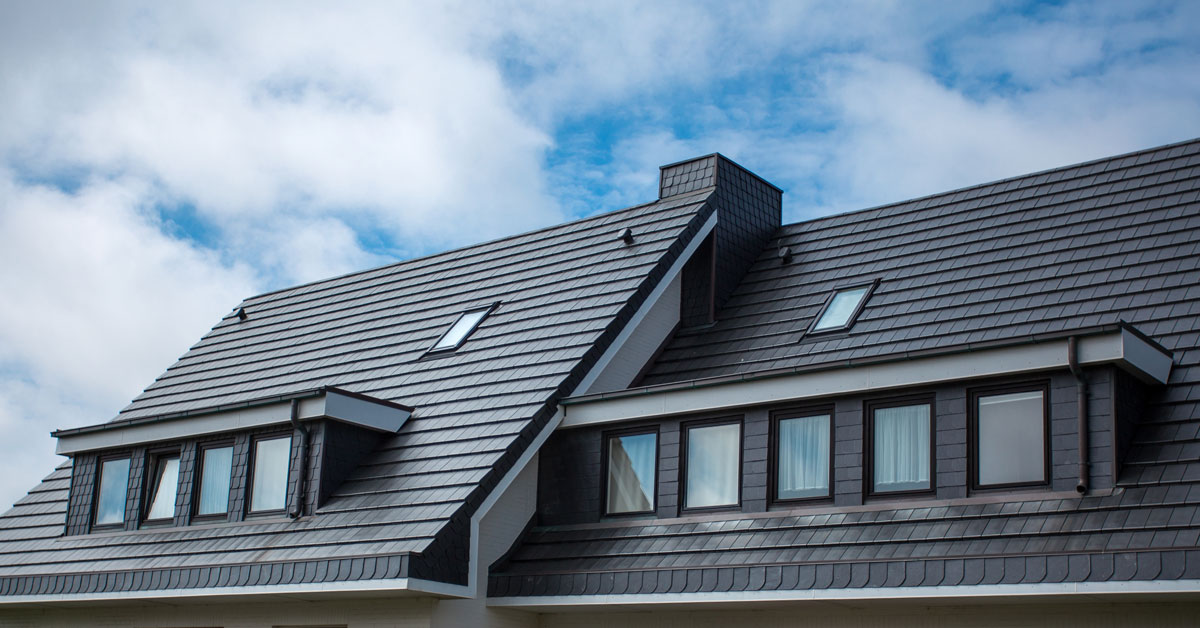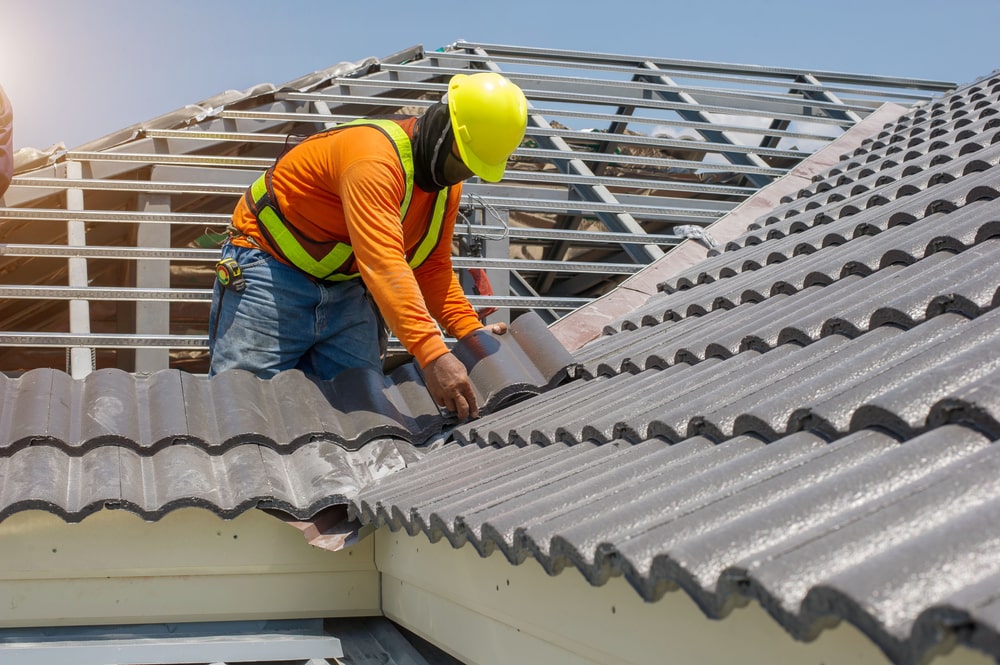Important Questions to Ask Gainesville Roofing Companies Prior To Employing
Important Questions to Ask Gainesville Roofing Companies Prior To Employing
Blog Article
Best Practices for Ensuring Correct Roof Covering Ventilation
A balanced intake and exhaust vent ratio, generally 1:300, plays a crucial duty, with intake vents ideally placed at the reduced edge of the roof covering for cool air entry and exhaust vents at the height for warm air leave. Maintaining insulation away from vents is vital to prevent air flow restriction.
Understand Ventilation Fundamentals
Effectively recognizing air flow basics is important for ensuring the durability and effectiveness of roof covering systems. Efficient ventilation alleviates dampness build-up and temperature extremes in the attic, both of which can cause significant structural damage over time. A well-ventilated roof covering aids in preventing common problems such as mold and mildew development, wood rot, and ice dams, which can jeopardize the honesty of the roofing materials and the underlying structures.
The primary goal of air flow is to facilitate the movement of air, enabling a consistent exchange between the exterior and interior settings. This balance is attained with a combination of intake and exhaust vents that work together to preserve ideal air movement. Consumption vents, usually situated along the eaves or soffits, permit fresh air to get in the attic area, while exhaust vents, frequently located at or near the roofing ridge, allow hot, humid air to run away.
Secret aspects affecting the effectiveness of roofing air flow include correct positioning, sufficient sizing, and guaranteeing that both intake and exhaust vents are unobstructed. Regular inspection and upkeep are critical to recognize prospective blockages, damage, or inadequacies in the air flow system, consequently safeguarding the roofing system's efficiency and resilience.
Kinds of Roofing Vents
Roof vents play an important duty in keeping efficient attic room air flow and, by extension, the overall wellness of the roof covering system. Different kinds of roof vents are readily available, each with distinct benefits tailored to specific roof covering demands.

Soffit vents are mounted under the eaves and operate in tandem with roofing vents to guarantee a well balanced consumption and exhaust system. By permitting cooler air to get in from below, soffit vents help with the expulsion of hot air via upper vents. Gable vents, located on the outside walls of the attic, offer an additional effective option, specifically in homes with gable roofings.
Evaluate Your Current Air Flow

Following, consider the age and condition of your roofing products and ventilation elements. Older systems might not comply with present building ordinance or might have deteriorated gradually, lowering their efficiency. Conduct an extensive exam to determine any type of indicators of wear and tear, such as rust, damage, or voids that might compromise the system's performance.
Additionally, gauge the attic temperature level and moisture degrees. Heats and moisture can indicate insufficient ventilation - roofing companies. Make use of a hygrometer and thermometer to get precise analyses, comparing them with outside problems. Relentless discrepancies suggest prospective problems that require dealing with.
Installment Best Practices
Effective installment of roofing air flow systems is extremely important for making certain optimum efficiency and long life. Appropriate installment starts with recognizing the certain ventilation needs of the building and the roof covering it covers. This involves calculating the correct ratio of consumption to exhaust vents, normally sticking to the 1:300 guideline, which states one square foot of air flow for every single 300 square his response feet of attic room flooring area.

Intake vents need to be mounted at the roofing system's reduced edge, usually in the soffits, to enable cool air to go into. Exhaust vents, on the various other hand, ought to be mounted near or at the roofing system's peak to assist in the exit of cozy, wet air.
Seal all vent connections carefully to protect against air leaks and possible water infiltration. Use top quality products and follow manufacturer guidelines to make sure longevity and performance. Furthermore, integrating ridge vents with baffles can significantly improve air movement effectiveness by protecting against wind-driven rainfall and snow from getting in the attic room.
Inevitably, accurate setup of roof covering air flow systems reduces potential concerns such as mold and mildew growth, ice dams, and architectural damage, ensuring the roofing's honesty and the structure's overall health.
Regular Maintenance Tips
Consistency in upkeep methods is fundamental to making certain the lasting efficiency of roof air flow systems. Throughout these evaluations, guarantee that vents are totally free of debris, nests, and other obstructions that could restrain air movement.
Cleaning up the vents is another essential task. Utilize a soft brush or a vacuum cleaner to remove dust and debris from intake and exhaust vents. Be mindful not to damage use this link the air vent screens or louvers during the procedure. Additionally, examine the attic room space for any type of indicators of water damages, which can jeopardize the integrity of the roof system.
Proper insulation is equally vital. Make certain that attic insulation does not block the vents, as this can significantly limit air flow. Reposition or replace it to maintain an effective obstacle. if any kind of insulation has shifted or settled.
Finally, replace any type of harmed or missing components immediately. Broken vents, broken roof shingles, or tatty flashing can all add to inadequate ventilation and ought to be attended to immediately. Normal maintenance guarantees that the roof air flow system works efficiently, consequently prolonging the life-span of the roofing itself.
Final Thought
Ensuring appropriate roof air flow is critical for keeping the efficiency and durability of a roof covering system. Adherence to the 1:300 intake and exhaust air vent proportion, paired with the critical positioning of vents, is essential. Regular biannual evaluations, particles cleansing, and making certain insulation does not obstruct air flow are essential practices. Executing these ideal techniques will certainly promote a well-ventilated roof system, therefore mitigating potential issues associated with moisture accumulation and excessive heat, ultimately extending the roofing's life-span.
A well balanced consumption and exhaust air vent ratio, frequently 1:300, plays a crucial role, with consumption vents ideally put at the lower edge of the roof covering for amazing air access and exhaust vents at the top for cozy air exit. Consumption vents, normally located along the eaves or soffits, enable fresh air to enter the attic room space, while exhaust vents, typically located at or near the roofing ridge, allow warm, humid air to escape.
Soffit vents are mounted under the eaves and work in tandem with roofing vents to ensure a balanced consumption and exhaust system. By allowing cooler air to enter from below, soffit vents facilitate the expulsion of hot Full Report air via upper vents. Adherence to the 1:300 consumption and exhaust vent proportion, coupled with the calculated positioning of vents, is crucial.
Report this page